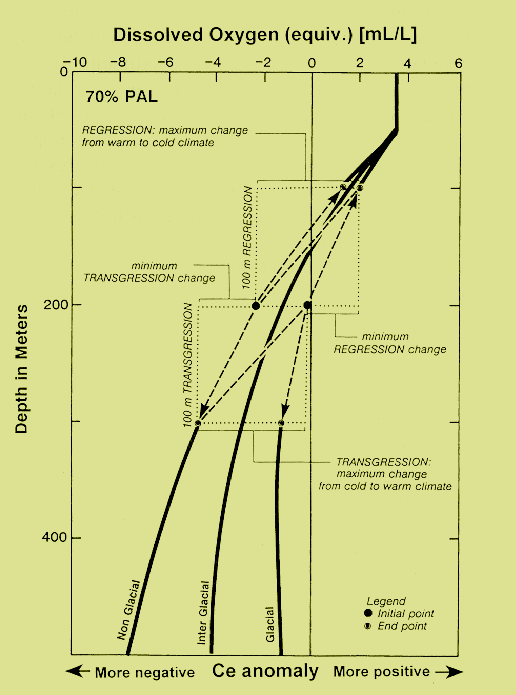 Figure 2 Oceanic redox conditions for three climatic regimes at 70% present atmospheric level
(PAL) of oxygen. Redox curves based on the model of Wilde (1987) for postulated atmospheric levels
of oxygen of Budyko et al. (1985) for the Late Ordovician of about 70% PAL. Climatic regimes follow
assumptions of Wilde and Berry (1982) for deep ventilation and pycnoclinal thickness of 100 to 3000 m
(non-glacial); 100 to 1500 m (interglacial); and 100 to 1000 m (glacial). Only relative values of the whole-rock
Ce anomaly can be implied from the dissolved oxygen (equivalent) content. More negative Ce anomalies
in whole rock occur as dissolved oxygen equivalents decline. More positive anomalies occur as
dissolved oxygen increases. The example depicts the change in bottom anoxia at a given point on the
bottom initially at 200 m depth with either a transgression or a regression of 100 m. During a transgression,
the redox value at a fixed point would become more negative as the depth at the fixed point became
deeper. During a regression, as the depth of water decreased the redox value would become positive.
Figure 2 Oceanic redox conditions for three climatic regimes at 70% present atmospheric level
(PAL) of oxygen. Redox curves based on the model of Wilde (1987) for postulated atmospheric levels
of oxygen of Budyko et al. (1985) for the Late Ordovician of about 70% PAL. Climatic regimes follow
assumptions of Wilde and Berry (1982) for deep ventilation and pycnoclinal thickness of 100 to 3000 m
(non-glacial); 100 to 1500 m (interglacial); and 100 to 1000 m (glacial). Only relative values of the whole-rock
Ce anomaly can be implied from the dissolved oxygen (equivalent) content. More negative Ce anomalies
in whole rock occur as dissolved oxygen equivalents decline. More positive anomalies occur as
dissolved oxygen increases. The example depicts the change in bottom anoxia at a given point on the
bottom initially at 200 m depth with either a transgression or a regression of 100 m. During a transgression,
the redox value at a fixed point would become more negative as the depth at the fixed point became
deeper. During a regression, as the depth of water decreased the redox value would become positive.
 Figure 2 Oceanic redox conditions for three climatic regimes at 70% present atmospheric level
(PAL) of oxygen. Redox curves based on the model of Wilde (1987) for postulated atmospheric levels
of oxygen of Budyko et al. (1985) for the Late Ordovician of about 70% PAL. Climatic regimes follow
assumptions of Wilde and Berry (1982) for deep ventilation and pycnoclinal thickness of 100 to 3000 m
(non-glacial); 100 to 1500 m (interglacial); and 100 to 1000 m (glacial). Only relative values of the whole-rock
Ce anomaly can be implied from the dissolved oxygen (equivalent) content. More negative Ce anomalies
in whole rock occur as dissolved oxygen equivalents decline. More positive anomalies occur as
dissolved oxygen increases. The example depicts the change in bottom anoxia at a given point on the
bottom initially at 200 m depth with either a transgression or a regression of 100 m. During a transgression,
the redox value at a fixed point would become more negative as the depth at the fixed point became
deeper. During a regression, as the depth of water decreased the redox value would become positive.
Figure 2 Oceanic redox conditions for three climatic regimes at 70% present atmospheric level
(PAL) of oxygen. Redox curves based on the model of Wilde (1987) for postulated atmospheric levels
of oxygen of Budyko et al. (1985) for the Late Ordovician of about 70% PAL. Climatic regimes follow
assumptions of Wilde and Berry (1982) for deep ventilation and pycnoclinal thickness of 100 to 3000 m
(non-glacial); 100 to 1500 m (interglacial); and 100 to 1000 m (glacial). Only relative values of the whole-rock
Ce anomaly can be implied from the dissolved oxygen (equivalent) content. More negative Ce anomalies
in whole rock occur as dissolved oxygen equivalents decline. More positive anomalies occur as
dissolved oxygen increases. The example depicts the change in bottom anoxia at a given point on the
bottom initially at 200 m depth with either a transgression or a regression of 100 m. During a transgression,
the redox value at a fixed point would become more negative as the depth at the fixed point became
deeper. During a regression, as the depth of water decreased the redox value would become positive.